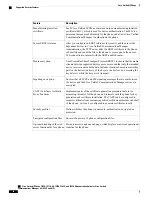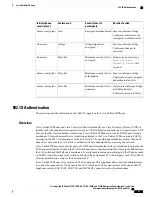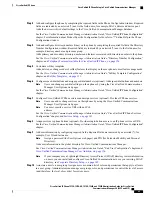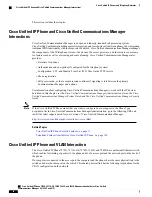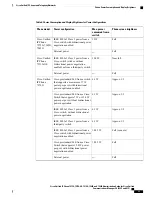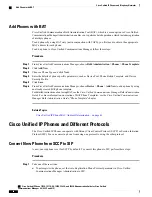
C H A P T E R
2
Cisco Unified IP Phones and Telephony Networks
•
Phone and Telephony Network Overview, page 29
•
Cisco Unified IP Communications Product Interactions, page 29
•
Cisco Unified IP Phone Power, page 31
•
Phone Configuration Files, page 34
•
Phone Startup Process, page 36
•
Cisco Unified Communications Manager Phone Addition Methods, page 37
•
Cisco Unified IP Phones and Different Protocols, page 40
•
Cisco Unified IP Phone MAC Address Determination, page 41
Phone and Telephony Network Overview
Cisco Unified IP Phones enable you to communicate by using voice over a data network. To provide this
capability, the IP phones depend upon and interact with several other key Cisco Unified IP Telephony and
network components, including Cisco Unified Communications Manager, DNS and DHCP servers, TFTP
servers, media resources, Cisco PoE, and others.
This chapter focuses on the interactions between the Cisco Unified IP Phone 7975G, 7971G-GE, 7970G,
7965G, and 7945G and Cisco Unified Communications Manager, DNS and DHCP servers, TFTP servers,
and switches. It also describes options for powering phones.
For related information about voice and IP communications, see this URL:
http://www.cisco.com/en/US/products/sw/voicesw/index.html
This chapter provides an overview of the interaction between the Cisco Unified IP Phone and other key
components of the Voice over IP (VoIP) network.
Cisco Unified IP Communications Product Interactions
To function in the IP telephony network, the Cisco Unified IP Phone must be connected to a networking
device, such as a Cisco Catalyst switch. You must also register the Cisco Unified IP Phone with a
Cisco Unified Communications Manager system before the phone can send and receive calls.
Cisco Unified IP Phone 7975G, 7971G-GE, 7970G, 7965G, and 7945G Administration Guide for Cisco Unified
Communications Manager 9.0 (SCCP and SIP)
29


